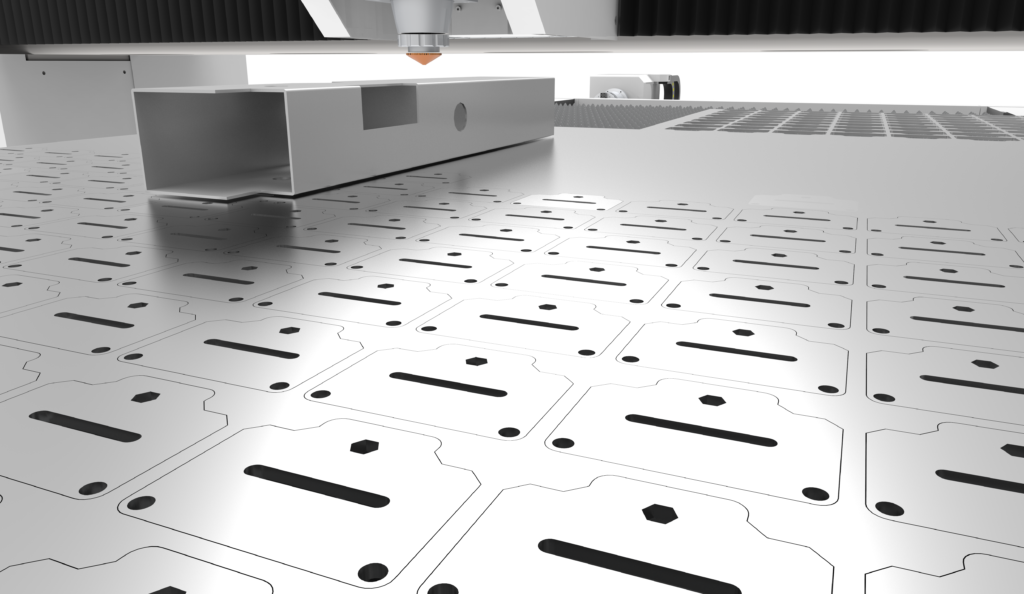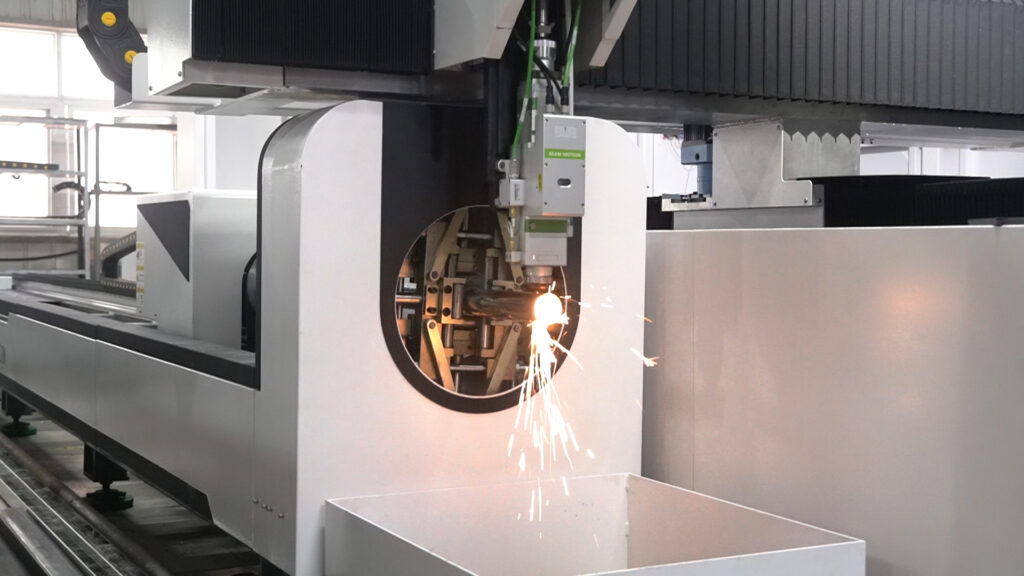Overview of CNC laser cutting machine
Laser cutting machine consists of CNC system, external optical path system, water cooling machine, cutting system and laser. When the laser cutting machine is working, it uses energy to cut metal materials, non-metal materials, composite materials, and organic materials. Laser cutting technology has many advantages, such as fast processing speed, no heating of materials, non-metallic materials will not be deformed due to heat, and higher work efficiency during processing.
Common faults and solutions of CNC laser cutting machines
1 CNC laser output failure
The first is that the air tightness of the air path at the laser output is reduced. Due to the reduction in air tightness, there will be a problem of oxygen entering the gas circuit. Then the laser discharge tube in the circuit will synthesize the gases and synthesize carbon dioxide and other gases into a variety of gases. If a large number of gas components seriously affects the laser oscillation, nitrogen must be used to spray the gas circuit before operation, and nitrogen must be used to discharge excess oxygen from the circuit after a few minutes. The second is that after long-term use of the laser machine, the oil in the Roots pump will vaporize due to high pressure, and the oil will be adsorbed on the electrode, further causing electrode damage. At this time, you can check whether the Roots pump is sealed and check the electrode on time. is normal to reduce electrode damage. The third type is that there are foreign objects on the laser output window. When there are foreign objects on the laser output window, black spots will appear on the laser, resulting in a reduction in laser energy. You should check whether there are foreign objects on the output window when using it.
2 Z-axis follow-up system failure

The first is that during the operation of the Z-axis, there are foreign objects blocking the running trajectory of the Z-axis, causing a servo system failure. When operating the cutting machine, workers should check the motion track of the Z-axis to avoid malfunctions of the servo system caused by foreign objects. The second is that the Z-axis sensor fails or malfunctions, causing the sensor to be unable to detect the Z-axis. The staff should check the sensor to see if there is a lot of dust or poor contact. If it is normal, check whether the conductor data line is damaged or has poor contact. If it is abnormal, replace the data line. If it is normal, check whether the voltage line is normal. When checking the waveform. A normal sine waveform indicates that the sensor is intact. If an irregular waveform appears during detection, it proves that the sensor chip was broken. The third type is that the weight of the cutting head is relatively high and overload occurs during processing. When the cutting machine is running, the weight of the cutting head exceeds the limit of the Z-axis, which will cause overload during operation. The staff should calculate the weight of the cutting head to ensure that the weight of the cutting head is within the range of the Z-axis tension.
3 Cutting machine probe failure
As the use time increases, the sensor core will lose its roundness and the magnetic field lines will be damaged. When the magnetic field is damaged, it can be clearly observed that the sensor will move up and down along with the rotation. In this case, the sensor should be replaced in time. The fault that causes the probe foot to vibrate up and down may also be due to the influence of dust. Since the probe foot is located on the nozzle, if it is not cleaned for a long time, a lot of dust will accumulate, resulting in poor contact between the probe foot and the nozzle, and the signals from the probe foot and the nozzle will pass through. Intermittent phenomena in the circuit will also cause the probe feet to vibrate up and down. Staff can use alcohol to clean the dust on it.
4 Automatic blanking failure of cutting machine
The first is due to the influence of temperature. Under the influence of temperature, the distance between the nozzle and other parts in the Z-axis changes. The focus of the laser cannot fall on the processed parts, which not only reduces the work efficiency, but also The parts cannot be completely melted, causing the cutting machine to fail to automatically blank. The staff should adjust the zero reset button on the transmitter, which can effectively improve the failure of automatic blanking. The second type is caused by impure oxygen. Since the impure oxygen cannot completely oxidize the construction parts, resulting in automatic blanking failure, the staff should replace the oxygen in time to ensure that the oxygen cylinder is sealed. The third is that the installation dimensions of the probe and the workpiece are too different, and the laser focus point cannot fall on the part, resulting in automatic blanking failure. In this case, the staff should replace the working parts of the probe. The fourth is that the lens on the optical path is damaged, causing the laser to be unable to focus. The staff should replace the damaged lens in time.
5 Cutting machine light output failure.

The first is the overtravel of the servo system. Because the servo system overtravels and the probe fails to correct, the pressure on the workpiece will increase. At the same time, due to long-term use, some of the ejector pins on the workbench will be damaged or broken, which will cause the support of the workpiece to disappear, and it will not be able to withstand the pressure brought by the probe feet, which will cause overtravel and cause light failure. In this case, the probe feet should be corrected in time and the thimble on the workbench should be replaced to effectively eliminate this fault. The second is that the 45° circular polarizer is not installed properly. This is usually due to a change in the installation angle during routine maintenance. This change will cause the laser to be blocked by the wall of the optical path tube and unable to pass through the focusing lens, causing the cutting machine to malfunction. , the circular polarizer should be reinstalled to ensure that the laser can be smoothly absorbed into the focusing lens. The third type is that the laser cannot be emitted because the light shutter is not opened. The staff can just open the light shutter.
6 The cutting machine cannot start high-voltage fault.
The first is caused by the instability of the power supply voltage connected to the laser cutting machine. The staff should check the power supply voltage of the cutting machine in time. The second reason is that the ordinary tap water used for cooling the machine tool contains a large amount of scale and impurities. Long-term use will cause a large amount of scale to accumulate on the waterway of the cutting machine, causing insufficient water pressure. Staff should clean the machine tool cooling system in time to ensure that scale in the machine tool system does not cause poor water flow.
Conclusion
At present, CNC laser cutting technology has become the preferred way to perform cutting operations. In order to better use the laser cutting machine and improve the efficiency of the staff, staff need to continue to learn and practice. As the frequency of use of CNC laser cutting machines increases, the frequency of these common fault problems will also increase. I hope that through the explanation of fault problems and the analysis of related solutions in this article, it can provide guidance for the use of CNC laser cutting machines. Come for more convenience.

